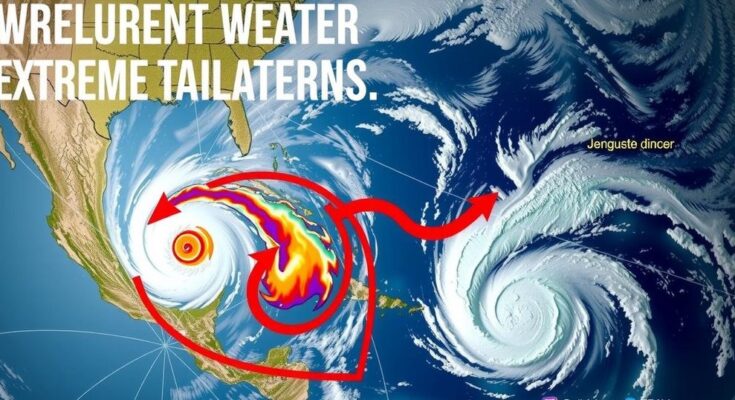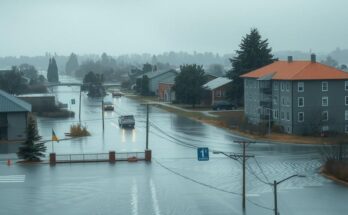The article explores the link between rising ocean temperatures and the increasing intensity of hurricanes, highlighting the challenges farmers face as climate change intensifies weather patterns. Experts recommend revising hurricane classification and emphasize the need for farmers to adapt to shifting weather, as both droughts and heavy rains pose significant threats to agriculture. The urgency of addressing climate change is emphasized to mitigate the impact on communities and ecosystems.
The recent spate of extreme weather events, including hurricanes, signals an alarming trend in climate dynamics that farmers and meteorologists are closely monitoring. According to Penn State professor Chris Forest, rising ocean temperatures significantly contribute to the intensity and frequency of storms like Hurricanes Helene and Milton. Forest, who has tracked storm intensity trends since the 1990s, suggests that the current classification system for hurricanes may need revision to account for the increasingly severe storms that exceed the previous records.
While hurricanes have not yet reached Category 6 status, the growing intensity of storms, driven by elevated temperatures in the tropics, is clear. As these warmer waters bolster hurricane energy, the forecasts for upcoming weather patterns remain complicated by external influences such as El Niño, which disrupts typical weather conditions across vast areas, from the Gulf of Mexico to Africa. Thus, despite the undeniable long-term trends of rising storm intensity, year-to-year weather predictions can remain unpredictable due to these interacting climatic factors.
Hurricane Helene serves as a poignant example of the consequences these trends may yield, as its heavy rainfall and flooding reached deep inland, showcasing the effect of increasingly severe storms on agricultural regions. As atmospheric temperatures rise, the capacity for moisture in the air increases, resulting in storms that bring greater rainfall and more severe weather events. This shift may lead farmers to face intensified rainfall and drought conditions, which will present significant challenges far beyond just hurricanes.
Experts like Forest emphasize that while climate trends indicate warmer temperatures and subsequent weather extremes, the success of crops will continue to hinge upon daily variations in weather. Many farmers are already noticing shifts in weather patterns and have begun adapting their practices. A survey conducted in Maryland revealed that a significant majority of large-scale row crop producers acknowledge the reality of climate change and its impacts on their operations.
Looking ahead, the year 2024 is projected to be the warmest on record, exacerbated by persistent high global temperatures. The World Meteorological Organization has indicated that the decade from 2015 to 2024 has been the hottest in recorded history, with a substantial rise in extreme weather events affecting both communities and economies worldwide. Deteriorating weather patterns coupled with increased crop density and emerging diseases pose serious challenges to agriculture, demanding immediate action to mitigate greenhouse gas emissions and strengthen climate monitoring efforts.
The article addresses the direct correlation between rising global temperatures and the increasing severity of weather events, particularly hurricanes. With approximately 70% of the Earth’s surface covered in water, monitoring ocean temperature trends becomes vital for understanding and predicting extreme weather outcomes. The text cites observations from professionals in climate dynamics, revealing a consensus regarding the amplified energy for storms due to warmer oceanic conditions. As agricultural practices evolve in response to these changes, the implications of climate change on farming are increasingly significant, warranting attention from both scientists and farmers alike.
In summary, the data and observations detailed in this discussion underscore the harsh reality of climate change and its profound impact on storm intensity and agricultural stability. While short-term weather forecasting remains uncertain, the long-term trend indicates major challenges ahead, with rising temperatures contributing to increasingly severe storms and shifting precipitation patterns. Farmers are urged to adapt to these deviations to sustain their livelihoods. Urgent action on greenhouse gas emissions is critical to mitigate future risks associated with extreme weather events. The response to these challenges necessitates a cooperative effort between scientific communities, policymakers, and agricultural stakeholders to implement sustainable practices in the face of climate adversity.
Original Source: www.lancasterfarming.com




